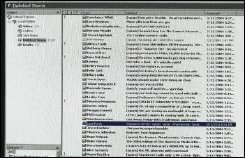Image spam grows to 20 percent of spam

E-mail spam that relies on images to make it difficult to filter now encompasses 21 percent of all spam, said IronPort Systems, a San Bruno, Calif., company.
The anti-spam company said the form of e-mail advertising has grown rapidly since 2005, when it accounted for 1 percent of spam, USA Today reported Monday. Spam is unsolicited advertising or messages sent via e-mail.
The image-based spam, which is harder to detect than text spam, uses software that creates variances in the images' sizes, colors, backgrounds, and font types so spam filters recognize them as unique messages and do not block them, Craig Sprosts of IronPort, told the newspaper.
Sprosts said the spam is particularly troublesome to e-mail users because it is more than seven-times larger than text-only messages.
Most of the image spam, and 20 percent of all spam, is in the form of stock scams, IronPort said. Most of it comes from Russia and within the United States, the company told the newspaper.
Copyright 2006 by United Press International





















